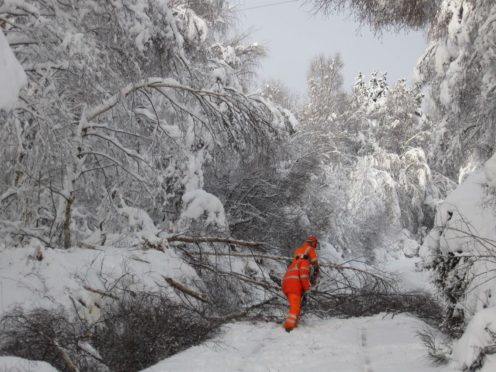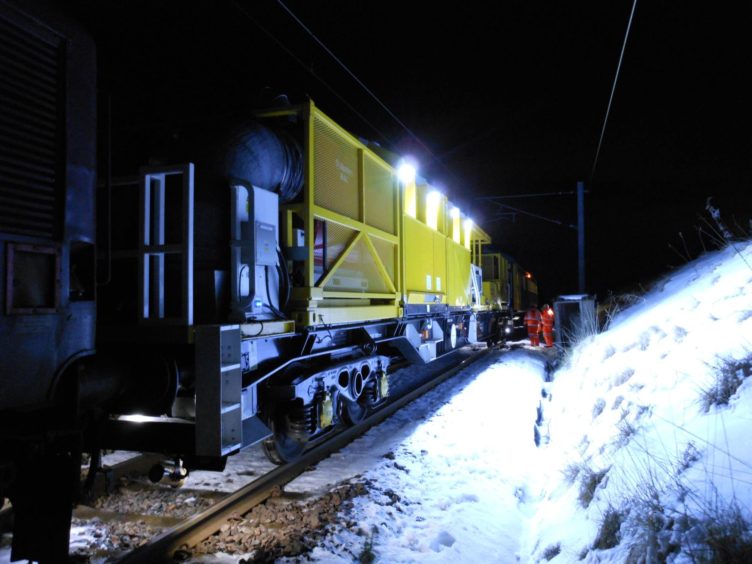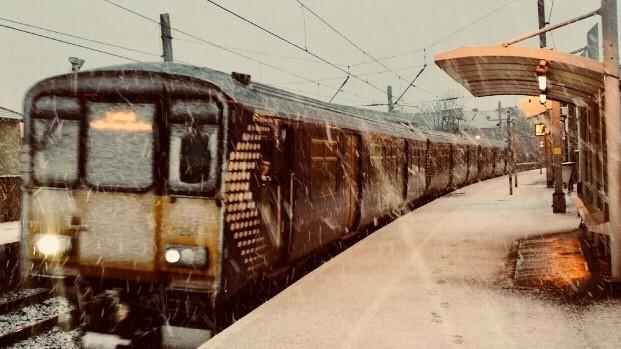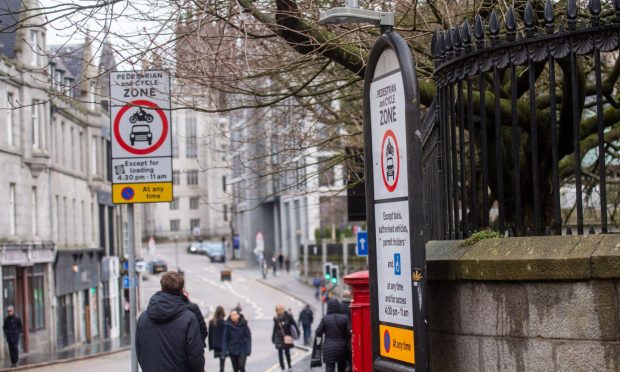It’s been a tough old week when it comes to getting from A to B in Scotland.
The ongoing coronavirus lockdown means that most of the country’s working population are doing so from home, but thousands of key workers have been battling the elements on the roads and rail to get around.
It’s a big job to keep things moving, so we asked Scotrail and Network Rail to explain how things are kept ticking over on the train network when the temperature plummets.
The winter train
In recent years, Scotland’s Railway – a partnership between rail networks including Scotrail, Transport Scotland and Network Rail – made new investments to help support the network.
The £1million winter train is the headline grabber.
It is designed to melt snow and ice that builds up on key sections of track using heat-lances and hot air blowers.
The specialist train, which is based in Perth and unique to Scotland, is key to thawing critical infrastructure that will allow staff to re-open lines more quickly.
Frozen points! These are movable rails which allow trains to switch tracks. When snow and ice pack in between the blades, we need to dig them out.
Many have heating strips fitted, but even those can be overwhelmed when temperatures drop far below zero. pic.twitter.com/DMkyfyjOYU
— Network Rail Scotland (@NetworkRailSCOT) February 11, 2021
Supporting the star member of the train partnership’s cast is a fleet of 10 snow ploughs based in Glasgow, Edinburgh, Motherwell and Inverness.
These are used to clear deep lying snow and a helicopter fitted with thermal imaging cameras is used to identify frozen infrastructure to the rail maintenance teams.
The people
It’s no use having the fancy equipment without the right people to use it.
When the going gets tough weather-wise, teams of engineers work around the clock to look after key parts of the network to help prevent them from freezing up.
They’re also needed to reduced the ballast – the stones beneath the tracks – at some junctions to make sure the rails don’t freeze to the stones beneath.
The rail operators also have chainsaw teams on standby in case they’re needed to help clear a line.
At the stations themselves, staff muck in to keep platforms and carparks in a usable condition to lower the risk of trips and falls.
Our snowploughs remain on standby as cold weather still sits over Scotland. They're ready to go as soon as we need them. pic.twitter.com/YaqZXMAElN
— Network Rail Scotland (@NetworkRailSCOT) February 12, 2021
Scotrail’s operations director David Simpson said his company “has never been better prepared” for the winter challenges.
He said: “People understand the impact winter weather can have, especially on the railway.
“That’s why Scotland’s Railway has invested in specialist equipment, so that when bad weather strikes we can keep our passengers moving, while ensuring the safety of our customers and staff.
The winter fleet is coming… pic.twitter.com/tt74mTM8Tm
— Network Rail Scotland (@NetworkRailSCOT) January 6, 2021
“We’ve never been better prepared for winter in terms of weather monitoring, our specialist snow clearing train, snow ploughs, jet washers, space heaters and, of course, the hard work of all of our staff who go the extra mile to help the trains run on time.”
Have you travelled by train this winter? Email stuart.findlay@pressandjournal.co.uk and let us know what you thought about it.












